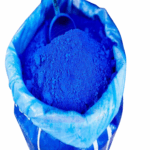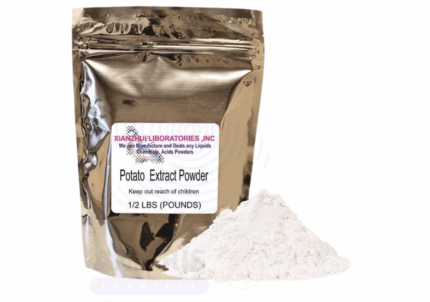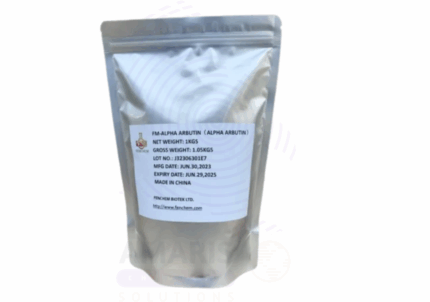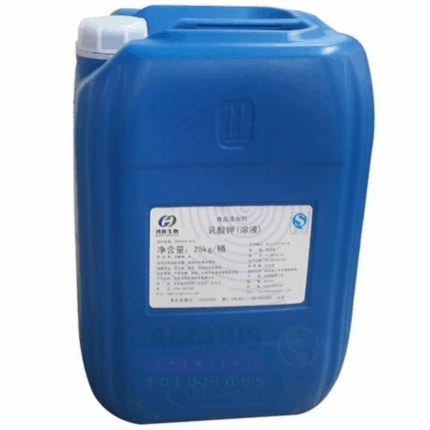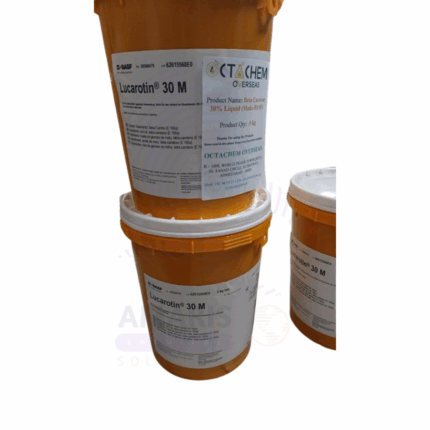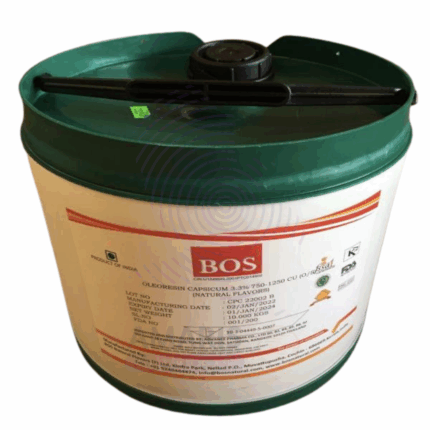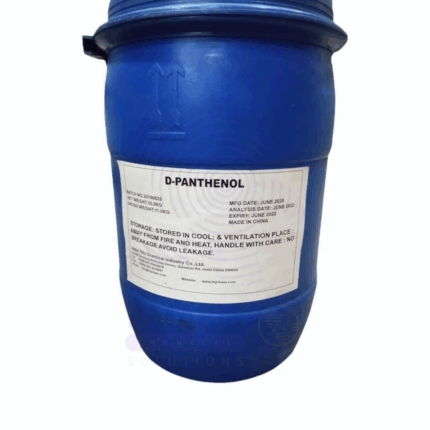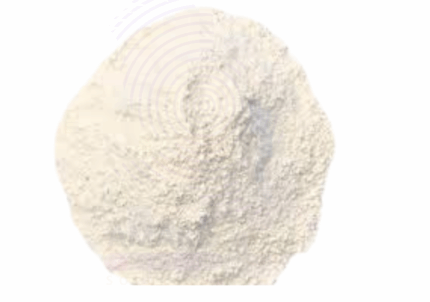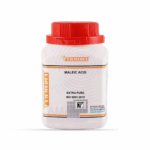
Derminol Liquor
Derminol Liquor is a high-performance fatliquor used in the leather tanning industry, specifically during the retanning and fatliquoring stages of wet-end leather processing. It is an emulsified blend of synthetic, semi-synthetic, or natural-based oils designed to impart softness, flexibility, and lubricity to leathers. Derminol Liquor provides deep penetration, excellent grain lubrication, uniform softness, and high lightfastness. It is compatible with both chrome-tanned and vegetable-tanned leathers. Derminol Liquor enhances leather feel, milling behavior, and aging resistance, and can be used alone or in combination with other fatliquors to achieve specific leather characteristics. It also contributes to environmental compliance by offering low BOD/COD values in effluents.
Derminol Liquor Uses
Primary Uses
- Leather Tanning and Retanning
- Used in the fatliquoring stage to reintroduce essential oils into leather after tanning, restoring softness and flexibility lost during tanning.
- Ensures deep fiber penetration and even distribution of lubricants throughout the hide.
- Suitable for full-grain, corrected grain, split leathers, and nubuck.
- Enhances grain tightness, reduces brittleness, and improves resistance to cracking during flexing.
- Provides softness without tackiness, allowing for easy mechanical handling and further processing.
- Used in the production of garments, footwear uppers, upholstery, belts, and automotive leathers.
- Grain Lubrication and Milling Behavior
- Improves grain break and surface smoothness, ensuring a soft handle and silky touch.
- Promotes uniform milling, allowing for enhanced grain pattern and character in finished leather.
- Helps prevent grain rupture during mechanical operations like staking or toggling.
- Heat and Light Stability
- Provides heat stability to leather, making it suitable for hot plate pressing and drying.
- Offers excellent lightfastness, making it ideal for pale or pastel-colored leathers.
- Dye Affinity Enhancement
- Improves dye penetration and uniformity by opening up the fiber structure.
- Facilitates deeper, richer coloration in dyed leathers.
Secondary Uses
- Water-Repellent Leather Formulations
- Certain Derminol variants provide moderate hydrophobicity, useful in the production of water-resistant or water-repellent leathers.
- Used in combination with hydrophobic agents for waterproof footwear and outdoor leather goods.
- Specialized Leather Effects
- Employed in the creation of suede, nubuck, and brushed leathers to achieve unique surface textures.
- Supports the development of soft, waxy, or oily leathers with deep, luxurious hand-feel.
- Low Environmental Impact Leather Processing
- Formulated to reduce COD (Chemical Oxygen Demand) and BOD (Biological Oxygen Demand) values in wastewater.
- Suitable for use in eco-friendly or ZDHC-compliant leather production systems.
- Leather Restoration and Reconditioning
- Used in post-tanning or restoration processes to soften and rejuvenate dried or aged leather.
- Improves feel and pliability of restored leather without altering original color or finish.
1. Basic Identification Attributes
- Chemical Name (IUPAC): Not applicable (mixture of emulsified oils and synthetic esters)
- Common/Trade Name: Derminol Liquor
- CAS Number: Not assigned (mixture)
- HS Code: 3403.91.00
- Molecular Formula: Not applicable (complex mixture)
- Synonyms:
- Synthetic Fatliquor
- Leather Softening Agent
- Emulsified Oil Blend for Leather
2. Physical & Chemical Properties
- Physical State: Liquid (emulsified)
- Color & Odor: Milky white to pale amber; mild oily odor
- pH (1% solution): 6.0–8.0
- Density: ~0.95–1.05 g/cm³ at 25°C
- Viscosity: Medium (easily pumpable and dispersible in water)
- Solubility: Forms stable emulsions in water; insoluble in organic solvents
- Stability: Stable under normal wet-end processing conditions; non-separating emulsion
- Compatibility: Compatible with most anionic and non-ionic tanning auxiliaries and dyes
3. Safety & Hazard Attributes
- Hazard Class (GHS): Not classified as hazardous
- NFPA Ratings:
- Health: 1
- Flammability: 1
- Reactivity: 0
- Exposure Limits: Not established
- Toxicity: Non-toxic under normal industrial use; avoid ingestion or prolonged skin contact
- Reactivity: Non-reactive; stable emulsion
4. Storage & Handling Attributes
- Storage Conditions: Store in cool, dry, well-ventilated area; avoid freezing and direct sunlight
- Container Type: HDPE drums or IBCs with tightly sealed lids
- Shelf Life: Up to 12 months in unopened containers
- Special Handling:
- Stir or agitate gently before use to ensure uniform consistency
- Avoid contamination with strong acids, alkalis, or oxidizing agents
5. Regulatory & Compliance Attributes
- REACH Status: Compliant (non-hazardous formulation)
- ZDHC Compliance: Formulated to meet ZDHC MRSL 2.0 standards (depending on variant)
- FDA Status: Not intended for food or pharmaceutical applications
- Transportation: Non-hazardous for road, sea, or air transport
- Waste Disposal: Dispose in accordance with local and national regulations; biodegradable emulsion
6. Environmental & Health Impact
- Ecotoxicity: Low; biodegradable emulsifiers and oils
- Persistence: Biodegradable under aerobic conditions
- Bioaccumulation: Not expected
- Carcinogenicity/Mutagenicity: Not classified as carcinogenic or mutagenic
- Biodegradability: Readily biodegradable in effluent treatment systems
Safety Handling Precautions
Personal Protective Equipment (PPE):
- Protective gloves (nitrile or rubber)
- Safety goggles or face shield
- Protective clothing or apron
- Ensure adequate ventilation in work area
Handling Measures:
- Avoid contact with eyes and prolonged skin contact
- Do not breathe mist or spray; use in well-ventilated area
- Wash hands thoroughly after handling
Storage Measures:
- Store in original container, tightly closed
- Keep away from sources of heat and ignition
- Avoid freezing; if frozen, thaw and homogenize before use
Hygiene Practices:
- Do not eat, drink, or smoke while handling
- Maintain clean working environment to prevent contamination
First Aid Measures
- Inhalation: Move person to fresh air; seek medical attention if symptoms persist
- Skin Contact: Wash thoroughly with soap and water; remove contaminated clothing
- Eye Contact: Rinse immediately with plenty of water for at least 15 minutes; consult physician if irritation occurs
- Ingestion: Rinse mouth with water; do not induce vomiting; seek medical attention
Firefighting Measures
- Fire Hazards: Low flammability; may emit smoke or fumes when heated excessively
- Extinguishing Media: Foam, dry chemical, or carbon dioxide
- Special Precautions: Wear full protective gear and self-contained breathing apparatus
- Decomposition Products: Carbon dioxide, carbon monoxide, trace organic vapors


 Preservatives(food)
Preservatives(food) Flavor Enhancers
Flavor Enhancers Acidulants
Acidulants Sweeteners
Sweeteners Antioxidants
Antioxidants Colorants(food)
Colorants(food) Nutraceutical Ingredients (food)
Nutraceutical Ingredients (food) Nutrient Supplements
Nutrient Supplements Emulsifiers
Emulsifiers
 Collectors
Collectors Dust Suppressants
Dust Suppressants Explosives and Blasting Agents
Explosives and Blasting Agents Flocculants and Coagulants
Flocculants and Coagulants Frothers
Frothers Leaching Agents
Leaching Agents pH Modifiers
pH Modifiers Precious Metal Extraction Agents
Precious Metal Extraction Agents
 Antioxidants(plastic)
Antioxidants(plastic) Colorants (Pigments, Dyes)
Colorants (Pigments, Dyes) Fillers and Reinforcements
Fillers and Reinforcements Flame Retardants
Flame Retardants Monomers
Monomers Plasticizers
Plasticizers Polymerization Initiators
Polymerization Initiators Stabilizers (UV, Heat)
Stabilizers (UV, Heat)
 Antifoaming Agents
Antifoaming Agents Chelating Agents
Chelating Agents Coagulants and Flocculants
Coagulants and Flocculants Corrosion Inhibitors
Corrosion Inhibitors Disinfectants and Biocides
Disinfectants and Biocides Oxidizing Agents
Oxidizing Agents pH Adjusters
pH Adjusters Scale Inhibitors( water)
Scale Inhibitors( water)
 Antioxidants(cosmetic)
Antioxidants(cosmetic) Emollients
Emollients Fragrances and Essential Oils
Fragrances and Essential Oils Humectants
Humectants Preservatives
Preservatives Surfactants(cosmetic)
Surfactants(cosmetic) Thickeners
Thickeners UV Filters
UV Filters
 Fertilizers
Fertilizers Soil Conditioners
Soil Conditioners Plant Growth Regulators
Plant Growth Regulators Animal Feed Additives
Animal Feed Additives Biostimulants
Biostimulants Pesticides (Herbicides, Insecticides, Fungicides)
Pesticides (Herbicides, Insecticides, Fungicides)
 Active Pharmaceutical Ingredients (APIs)
Active Pharmaceutical Ingredients (APIs) Excipients
Excipients Solvents(pharmaceutical)
Solvents(pharmaceutical) Antibiotics
Antibiotics Antiseptics and Disinfectants
Antiseptics and Disinfectants Vaccine Adjuvants
Vaccine Adjuvants Nutraceutical Ingredients (pharmaceutical)
Nutraceutical Ingredients (pharmaceutical) Analgesics & Antipyretics
Analgesics & Antipyretics
 Analytical Reagents
Analytical Reagents Solvents(lab)
Solvents(lab) Chromatography Chemicals
Chromatography Chemicals Spectroscopy Reagents
Spectroscopy Reagents microbiology-and-cell-culture-reagents
microbiology-and-cell-culture-reagents Molecular Biology Reagents
Molecular Biology Reagents Biochemical Reagents
Biochemical Reagents Inorganic and Organic Standards
Inorganic and Organic Standards Laboratory Safety Chemicals
Laboratory Safety Chemicals Specialty Laboratory Chemicals(Special Laboratory Equipment)
Specialty Laboratory Chemicals(Special Laboratory Equipment)
 Demulsifiers
Demulsifiers Hydraulic Fracturing Fluids
Hydraulic Fracturing Fluids Scale Inhibitors(oil)
Scale Inhibitors(oil) Surfactants(oil)
Surfactants(oil) Drilling Fluids
Drilling Fluids
 Dyes and Pigments
Dyes and Pigments Bleaching Agents
Bleaching Agents Softening Agents
Softening Agents Finishing Agents
Finishing Agents Antistatic Agents
Antistatic Agents
 Admixtures
Admixtures Waterproofing Agents
Waterproofing Agents Sealants and Adhesives
Sealants and Adhesives Curing Compounds
Curing Compounds Concrete Repair Chemicals
Concrete Repair Chemicals Anti-Corrosion Coatings
Anti-Corrosion Coatings
 Surfactants(cleaning)
Surfactants(cleaning) Builders
Builders Enzymes
Enzymes Solvents (Cleaning)
Solvents (Cleaning) Fragrances
Fragrances
 Electronic Chemicals
Electronic Chemicals Catalysts
Catalysts Lubricants
Lubricants Photographic Chemicals
Photographic Chemicals Refrigerants
Refrigerants Automotive chemicals
Automotive chemicals Pyrotechnic Chemicals
Pyrotechnic Chemicals
 Biodegradable Surfactants
Biodegradable Surfactants Bio-based Solvents
Bio-based Solvents Renewable Polymers
Renewable Polymers Carbon Capture Chemicals
Carbon Capture Chemicals Wastewater Treatment Chemicals
Wastewater Treatment Chemicals
 Pigments
Pigments Solvents(paint)
Solvents(paint) Specialty Coatings
Specialty Coatings Binders/Resins
Binders/Resins Additives
Additives Driers
Driers Anti-Corrosion Agents
Anti-Corrosion Agents Functional Coatings
Functional Coatings Application-Specific Coatings
Application-Specific Coatings
 Fresh Herbs
Fresh Herbs Ground Spices
Ground Spices Whole Spices
Whole Spices Spice Blends
Spice Blends Dried Herbs
Dried Herbs
 Leavening Agents
Leavening Agents Dough Conditioners
Dough Conditioners Flour Treatments
Flour Treatments Fat Replacers
Fat Replacers Decoratives
Decoratives Preservatives(baking)
Preservatives(baking)
 Plasticizers & Softeners
Plasticizers & Softeners Reinforcing Agents
Reinforcing Agents Adhesion Promoters
Adhesion Promoters Vulcanizing Agents
Vulcanizing Agents Antidegradants
Antidegradants Blowing Agents
Blowing Agents Fillers & Extenders
Fillers & Extenders Accelerators & Retarders
Accelerators & Retarders
